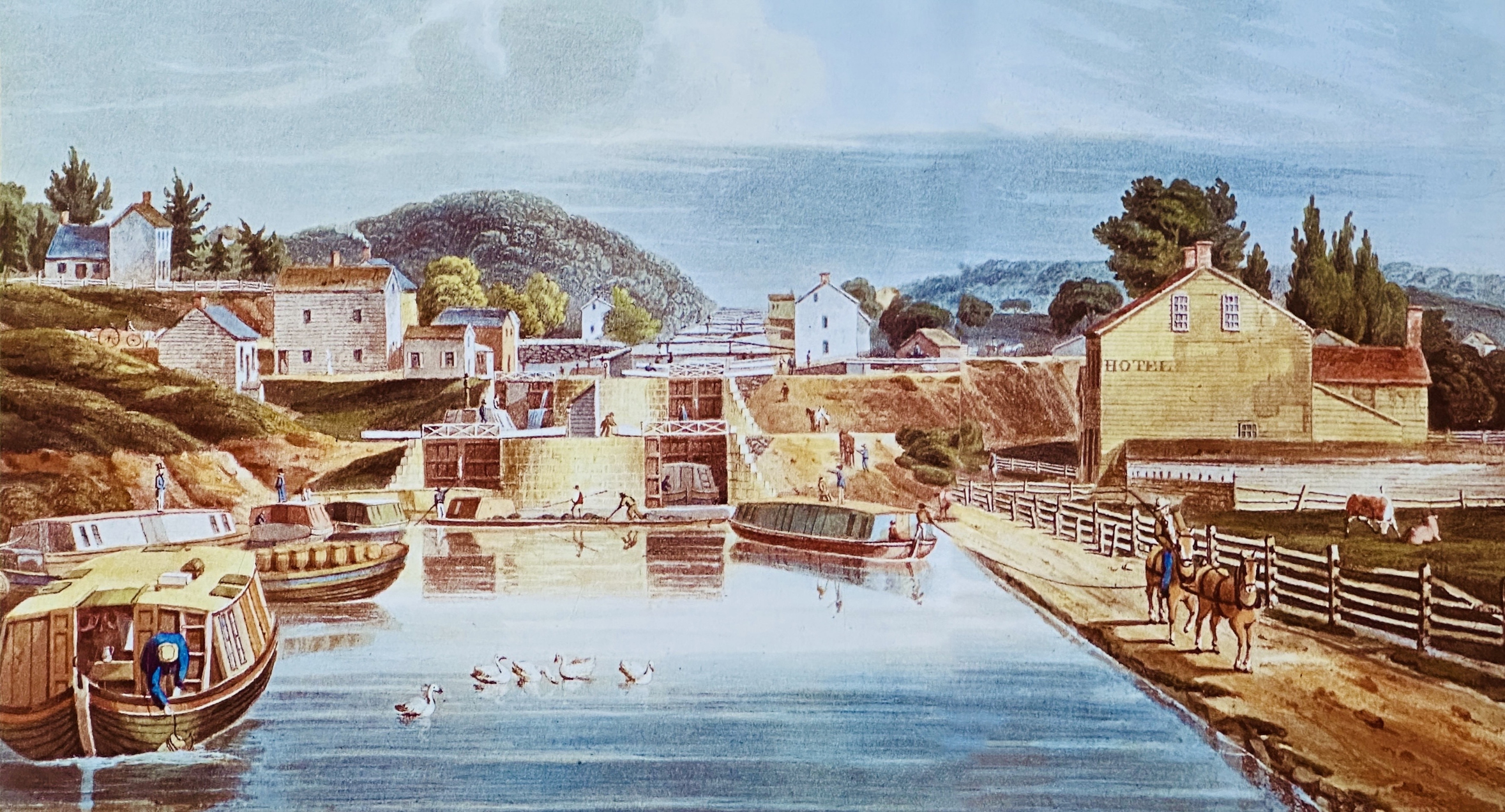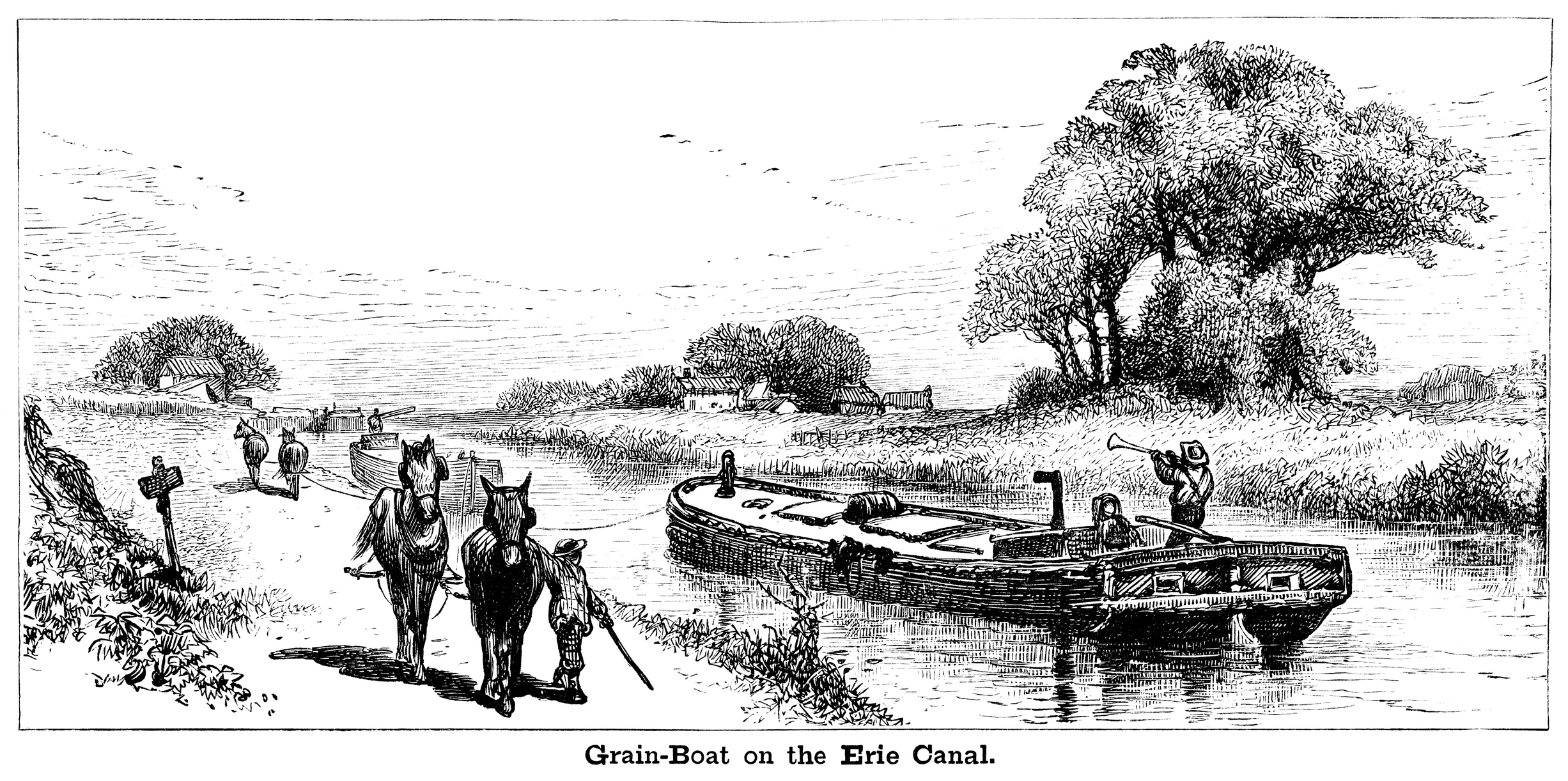
The digging of the Erie Canal was a project that used local workers in each section along the canal to build a complex geographical structure to enhance transport and commerce in the United States. Human muscle, horses, and oxen toppled trees, cleared land, and constructed the canal. Many of the laborers who dug the canal were Irish immigrants. Prior to the construction of the Erie Canal, east-west trade was almost non-existent in the United States. To ship goods, traders had to traverse the Ohio and Mississippi Rivers into the Gulf of Mexico, then transport goods around Florida and beyond to other reaches of the east coast. The canal propelled the United States into a giant in the world economy.
In the Classroom
There is an abundance of lesson ideas that can be used to help students develop a meaningful understanding of the economic impact, the geographic construction, the historical dimensions, and the civic implications of the Erie Canal.
Book Corner
Create a book corner in the room about the Erie Canal. Utilize geographic resources as well as historical books to show the immense impact of the project. Some recommendations include:
- The Erie Canal by Peter Spier
- Amazing Impossible Erie Canal by Cheryl Harness
- The Story of the Erie Canal by R. Conrad Stein
- Erie Canal by Peter Lourie
Primary Source Images
Show students images of inventions inspired during the construction of the Erie Canal and have them use deduction skills to figure out how each image would be used. Discuss the many inventions (stump-pulling machines for removing trees, blasting techniques to remove solid rock, felling a tree by winding on an endless screw, plow with extra set of sharp blades, one-wheel wheelbarrow, and aqueducts to provide passage of the canal over swift streams) in a small group or whole-class setting.
Ask students: How have challenges produced inventions for other projects?
Use Song
Distribute copies of the lyrics of the Low Bridge/Everybody Down song written about the Erie Canal. Compare to other worker songs written, such as, I’ve Been Working on the Railroad, Sixteen Tons (Tennessee Ernie Ford), 9 to 5 (Dolly Parton), Bread and Roses, Union Burying Ground (Woody Guthrie), Casey Jones, and John Henry. Discuss how workers sang to make tedious tasks easier and the time pass quicker. Encourage students to sing the songs, and even write lyrics to their own labor song inspired by a modern trade.

Map the Canal
Geographic features in New York created obstacles that hindered the construction of the canal. For example, the canal needed to cross over streams that flowed north or south, requiring the creation of aqueducts and freshwater locks that had to be built to gently raise or lower boats to and from Lake Erie over the 571 feet above sea level rise. The process to build the canal involved draining swamps, constructing aqueducts, clearing forests, and solving a variety of engineering problems, which included making cement that hardened underwater. Have students analyze maps of the canal at its completion and look for locks, towns, and other waterways.
Have students research the canal as it stands today. Ask students: What locks have been closed or abandoned? How has the Erie Canal been revived in places? What other uses have towns devised for the canal?
Research Social Movements
Several nineteenth century social reform movements flourished along the Erie Canal. Frederick Douglass set up his anti-slavery newspaper in Rochester, New York. The women’s suffrage movement held a convention in the canal town of Seneca Falls. Poor working conditions of immigrants who built the canal helped establish the union movement in New York. Have students research how the towpath was used as part of the route for the Underground Railroad, how religious communities (Mormons, Oneida Perfectionists, Seventh Day Adventists, etc.) started in canal communities and spread along the waterway, and how women’s rights movements began in canal towns.
Financed entirely by the state of New York, the canal was so successful that it only took fifty years to eliminate toll charges on transport and the state had recuperated roughly fifteen times the cost of construction. By 1882, use of the canal by over 20 million people had generated $121 million dollars. This major achievement of America’s “first economic stimulus package” is a great activity to connect current events and historical geography in the social studies classroom.
Nystrom World has hundreds of geography-based activities
Try a free 30-day trial today
Dr. S. Kay Gandy is a retired professor of 17 years and a retired elementary teacher of 27 years. Her goal is to work with teachers in countries around the world and watch movies in foreign theaters. Her books. Mapping is Elementary, My Dear: 100 Mapping Activities for K-6 Students, and 50 Ways to Teach Social Studies for Elementary Teachers provide practical lesson ideas for the classroom.
